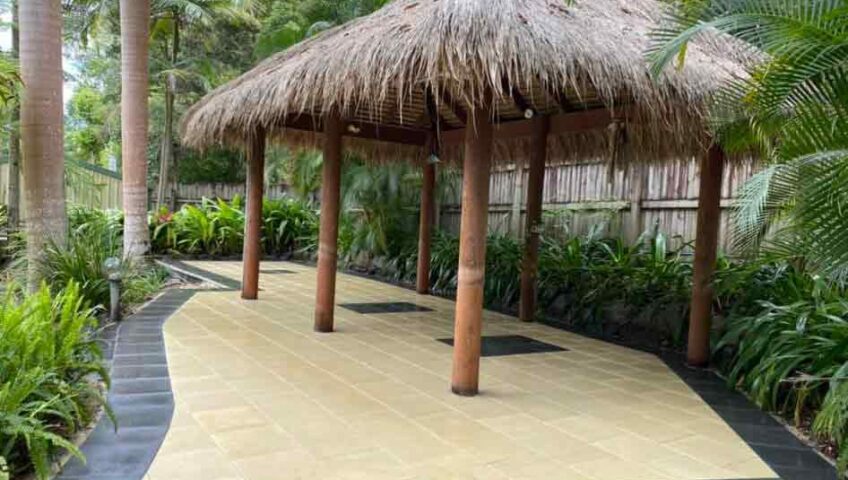Selecting the ideal pavers for your backyard project involves considering various factors such as aesthetics, functionality, durability, and maintenance requirements. Whether you’re planning a patio, pathway, or driveway, here’s a detailed guide to help you make an informed decision:
1. Determine Your Project Needs:
- Purpose: Define the intended use of the paver area—whether it’s for outdoor dining, lounging, pathways, or vehicle access.
- Size and Shape: Consider the dimensions and layout of the space where pavers will be installed to determine the quantity and configuration needed.
2. Choose the Right Material:
- Concrete Pavers: Available in various colors, shapes, and sizes, concrete pavers are versatile and durable. They can mimic natural stone or brick and are generally cost-effective.
- Natural Stone: Options like granite, limestone, slate, and sandstone offer unique textures and natural colors. They are durable but may require sealing and tend to be more expensive.
- Brick: Traditional and classic, brick pavers provide a timeless appeal. They are durable and can withstand heavy use but may fade over time and require occasional maintenance.
- Composite or Rubber Pavers: Eco-friendly options made from recycled materials, these pavers are lightweight, easy to install, and offer good traction. They are ideal for areas where flexibility and environmental impact are priorities.
3. Consider Aesthetic Appeal:
- Color: Choose pavers that complement the overall theme and colors of your home and landscaping. Lighter colors can make small spaces appear larger, while darker colors add warmth and hide dirt.
- Texture: Textured pavers provide grip and can prevent slipping, making them suitable for pool decks or wet areas. Smooth surfaces are easier to clean but may be slippery when wet.
4. Evaluate Durability and Maintenance:
- Strength: Ensure the pavers can withstand the expected load and foot traffic. Check the manufacturer’s specifications for compression strength and durability ratings.
- Resistance to Elements: Consider how well the pavers resist fading, staining, and weathering, especially in your climate (e.g., freeze-thaw cycles, intense sunlight).
- Maintenance Requirements: Some materials require regular sealing, cleaning, or re-leveling of sand or gravel joints. Choose pavers that align with your desired level of maintenance.
5. Installation Method and Cost:
- DIY vs. Professional Installation: Assess your skill level and the complexity of the project. Some pavers are easier to install than others, while intricate patterns may require professional expertise.
- Cost Considerations: Compare the initial cost of pavers, installation materials, and labor if hiring professionals. Factor in long-term maintenance and durability to determine overall value.
6. Eco-Friendly Options:
- Permeable Pavers: Designed to allow water to infiltrate through the joints, permeable pavers help reduce stormwater runoff and can recharge groundwater tables. They are ideal for eco-conscious projects.
7. Seek Expert Advice:
- Consult with Suppliers: Visit local suppliers or showrooms to see pavers firsthand and get expert advice on suitable options for your specific project requirements.
- Professional Landscapers: Consider consulting with landscape professionals who can provide design ideas, material recommendations, and installation services tailored to your needs.
8. Plan for Long-Term Use:
- Future Expansion: Anticipate future needs and plan for potential expansion or changes in landscaping that may affect the paver area.
- Warranty and Guarantees: Review manufacturer warranties and guarantees to understand coverage for defects and performance expectations.
By carefully evaluating these considerations and choosing pavers that align with your project goals, style preferences, and maintenance capabilities, you can create a beautiful and functional outdoor space that enhances the appeal and value of your home. Whether you prioritize durability, aesthetic appeal, or environmental impact, selecting the right pavers ensures a successful and satisfying backyard project.


